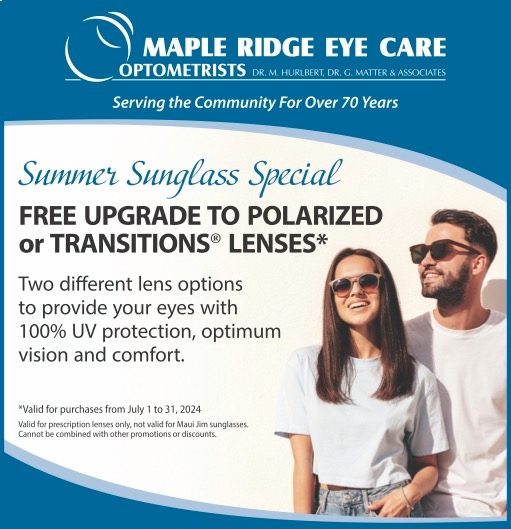Around 50% of Canadians over age 20 have a vision problem that requires correction with eyeglasses. This number jumps to 80% for Canadians 50 and older.
Prescription glasses use prescribed corrective lenses for many eye conditions to improve your vision. It all starts with a comprehensive eye exam.
Comprehensive eye exams help ensure healthy eyes and vision and identify signs of potential problems that may affect your long-term vision. After an exam, you may find your eye doctor has prescribed you corrective lenses.
So you find the perfect pair of glasses that help you see better and show off your personality. But how long do they last before you need new ones?
Let’s find out how long prescriptions last, signs that you may need a new set of lenses, and how to help you keep your glasses longer.
The Lifespan of Prescription Lenses
Prescription lenses are good for 1 to 2 years. According to the Canadian Association of Optometrists, the expiry date should be no longer than 2 years. A 1-year expiration is usually given to individuals with a higher-than-normal risk of vision changes or eye health problems that require more frequent optometrist visits.
Even if you’ve had your glasses for less than 2 years, you can experience changes in your vision that require an update to your prescription. Your eye doctor can detect these changes through regular eye exams and tweak your prescription to ensure it remains up-to-date.
A valid prescription should contain all the following relevant information:
- The prescribing optometrist’s information
- Patient’s name
- Refractive information
- Prescription issued date
- Prescription expiry date
- Authorizing signature
How Do I Know If I Need New Lenses?
Because your eyes constantly change, there may come a moment when your prescription no longer improves your eyesight. Some changes are subtle and occur over time, so you may not notice them.
So how do you know if you need new lenses before your prescription expires? The following signs may indicate you need new lenses.
Squinting
Squinting is closing your eyes partially to let less light in and focus better. While this allows you to see more clearly, it’s only temporary.
If you squint while wearing glasses, they probably don’t work so well for you anymore, and you may need a new prescription.
Headaches
An out-of-date prescription can make your eyes muscles work harder, causing eye strain and headaches. If you’re getting more headaches than usual while wearing your glasses, visit your eye doctor to see if your prescription has changed and if you need new lenses.
Blurry Vision
Blurry vision is usually an obvious and common indicator you need new lenses. But it can also be a sign of other health problems. Visit your eye doctor to rule out other causes and get an updated prescription.
Double Vision
Double vision can indicate that your eyes aren’t working together as they should be. There are several causes of double vision, so it’s crucial to have your eye checked by an optometrist. However, treatment may be as simple as updated corrective lenses.
Eye Fatigue
Eye fatigue can result from lack of sleep, medical conditions, long hours spent in front of a computer, or dry eyes. However, if you wear glasses and experience tired eyes frequently, you may need new glasses.
You Haven’t Had an Eye Exam in 2 Years
Regular eye exams are the best way to stay on top of prescriptions and eye changes. The Canadian Association of Optometrists recommends adults have an eye exam at least every 2 years. If you haven’t had an eye exam in 2 years, you may need new prescription lenses.
Lens Damage
Lenses can become damaged or scratched with everyday wear and tear or accidental dropping. Scratches, cracks, or flaws in the lens can affect your vision. While damage to the frames may not affect your vision, damage can affect how they fit on your face.
Your eye doctor can advise you on how to care for your glasses, or you can add a scratch-resistant coating on your next pair of lenses so they last longer.
Types of Prescription Lenses
Prescription glasses can provide clear and sharp vision for individuals with refractive errors. Refractive errors include nearsightedness, farsightedness, astigmatism, and presbyopia.
Several types of prescription lenses are available to address different vision problems. These include:
- Single-vision lenses: Contain one lens power to correct one vision issue.
- Bifocals: Contain 2 lens powers. The top of the lens corrects distance vision, and the lower lens corrects near vision.
- Trifocals: Contain 3 power zones, one to correct distance vision, one to correct near vision, and one to correct intermediate vision (about arm’s length).
- Progressive lenses: Similar to trifocals with near, intermediate, and distance vision correction but with no visible lines.
Prescription Lenses for Better Vision & Style
To prevent any future vision problems, visit your optometrist for regular checkups and updates to your prescription. Our team at Maple Ridge Eye Care can help you find the right pair of glasses. Whether you need to update a prescription, are starting a new job, or looking to spoil yourself with a stylish frame, book an appointment with us today.


